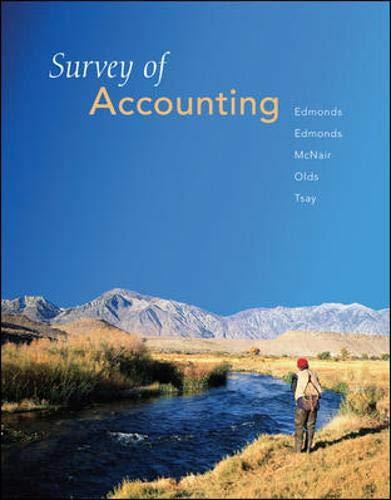Question
CASES 2-48 (a) The principal advantage of linking compensation to a Balanced Scorecard is the alignment of incentives with the organizational goals represented in the
CASES
2-48 (a) The principal advantage of linking compensation to a Balanced Scorecard is the alignment of incentives with the organizational goals represented in the Balanced Scorecard. Monetary rewards often provide very strong motivation to focus on the scorecard measures. This is an example of "extrinsic motivation" in which people work towards outcomes for which they are explicitly rewarded. The Balanced Scorecard can also provide "intrinsic motivation." Employees, once they learn about the company's strategy and how they can contribute to that strategy, will strive to help the organization achieve its strategic objectives because they want to take pride in working for a successful organization.
One concern in linking compensation to a Balanced Scorecard is whether the measures are sensible. Another is to ensure that reliable data collection processes exist for each measure used in the compensation function, and that the measures are not easily manipulated. Top management must try to anticipate whether managers might choose actions that are undesirable for the organization but that have a beneficial effect on scorecard measures. To alleviate these concerns, organizations may delay linking compensation to Balanced Scorecard measures for six months to a year after the scorecard's initial implementation to gain confidence in the measures and data collection processes. The organizations must be cautious, during the initial trial period, that the existing or temporary compensation scheme does not encourage a focus on only a narrow set of measures, such as short-term financial performance.
Another concern is how to design compensation based on multiple objectives. Assigning weights to individual objectives allows considerable incentive compensation to be paid when a business unit performs well on some objectives even if the business unit performs quite poorly on other objectives. Companies can instead award incentive compensation only if a specified minimum threshold is met on all, or a subset, of crucial objectives. Typically, a minimum financial hurdle is specified, such as 5% return on sales or 6% return on capital, before any bonus will be paid. This ensures that bonuses are not paid when the company is experiencing financial difficulties.
(b) M&R had a very detailed plan developed around the four Balanced Scorecard perspectives, with numerous metrics across the perspectives. Assigning percentage weights that determined how much the achieved balanced scorecard measures would contribute to the bonus pool suggests that the system was very balanced. Assigning degrees of difficulty to achieving targets provided incentives for managers to set stretch targets rather than easily achievable targets, knowing that if they missed a stretch target slightly, they would still receive an award that was higher than a manager who just met a much more easily achievable target. Because the performance factors underwent review by peers, upper management, and the employees subject to performance evaluation based on the performance factors, everyone concerned could have confidence that the performance factors were reasonable and comparable across different units. Note that all salaried employees in M&R's Natural Business Units had compensation linked to performance on Balanced Scorecard measures.
The use of three tiers of compensationcorporate, division, and business unitaligns individual employees to areas where they can have the most impact (their department or business unit), as well as the broader organization (division and corporation). Employees will be motivated to contribute to performance outside the particular department or business unit where they work, yet still benefit from achievements by their own unit, where their efforts will likely have the largest impact.
The issues in part (a) also arise in M&R. In addition, the pros and cons of extrinsic motivation can be discussed. A concern with motivation that is primarily extrinsic is that individuals may exhibit less creativity and innovation in decision-making and problem solving than they would if they were also intrinsically motivated.
Step by Step Solution
There are 3 Steps involved in it
Step: 1

Get Instant Access to Expert-Tailored Solutions
See step-by-step solutions with expert insights and AI powered tools for academic success
Step: 2

Step: 3

Ace Your Homework with AI
Get the answers you need in no time with our AI-driven, step-by-step assistance
Get Started


